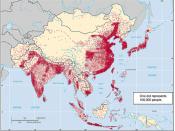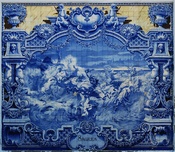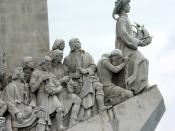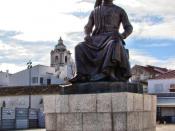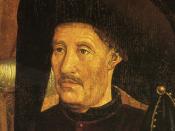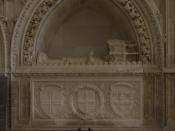Henry the Navigator in the Age of Exploration Prince Henry was born in Portugal in 1394. He was the third son of King John I. In the year of 1415, Henry helped his two brothers attack the port of Ceuta in Morocco. This inspired him to explore the unknown of South Africa. In the Algarve, Henry constructed his own school of navigation on a promontory called Sagres that juts out into the sea between Cape St. Vincent and Lagos bay. Prince Henry set up this school, so that there would be a place where sailors could study navigation and geography. Sailors learned navigation so that obviously they could guide their ships across the ocean.
Prince Henry had three goals other than his school. First, he wanted to learn about lands not heard of. Secondly, he wanted to bring Christianity to the continents of Asia and Africa. Lastly, he wanted to find an ocean route around Asia and Africa.
Prince Henry wanted to expand Portugal's trade and influence along the African coast and to find the source of the gold, that Islamic traders had been carrying north from central Africa for hundreds of years. Henry's skill in astronomy and mathematics helped him organize explorations along the northwest African coast. The money for the explorations was raised and planned by Henry. Astronomers, mathematicians, and mapmakers also helped him.
He acquired many scientists and navigation experts to plan for exploring the West coast of Africa. He was looking for the source of gold that was carried by Saharan caravans. He also wanted to locate the legendary Christian kingdom of Prester John, and see if there was a sea route to Asia other than the Silk Road, which was the land route to Asia.
The outcome of Henry's first voyage happened in 1419 after Joao Goncalves Zarco rediscovered the island of Madeira. In 1427 and then in 1432, voyages were sent to find the Azores. Both voyages succeeded. Starting in 1420 and running for twelve years, Henry dispatched 14 voyages, all aimed at rounding Cape Bojador. Cape Bajador was the "stop and turnaround" spot for most sailors, believing that only a "churning sea"ÃÂ lay ahead. This block was removed when Gil Eannes rounded the cape in 1432. After Eannes rounded the cape, Henry's ships advanced 250 miles farther down the coast. Then Henry was disappointed when the Pope granted the Canary Islands to Spain in 1436.
In 1437, Henry took part in an unsuccessful attempt to rescue his brother, Ferdinand, who had been captured by Muslims and imprisoned in Tangier. After that Henry returned to Sagres for good, and continued to dispatch different voyages. In 1441, Henry's ships reached Cabo Blanco under the command of Nuno Tristao. Then also in 1441, Antao Goncalves, one of Henry's explorers, returned to Portugal with some Africans he had captured on his expedition. These Africans were the first slaves brought from West Africa to Europe. This began the slave trade from the fort that Goncalves built on the Island of Arguim in 1443.
In 1445, Henry dispatched a large fleet to attack and destroy the Moroccan fort, which is located in Tider. After destroying the fort, one ship, under the command of Alvaro Fernandez continued on to dock at the "Cape of Masts" near the Gambia River. In 1456 Alvise da Cadamosto came upon the Cape Verde Islands. The very last voyage that Henry sent out in 1460 Pedro de Sintra went as far as Sierra Leone, 1,500 down the African coast.
In the year 1460 Lord Henry fell ill in his town at Cape St. Vincent and died of an unknown illness on November 13th and it is said that on the night of his death he was taken to the Church of St. Mary and there honorably buried. The King of Alfonso and his people were very saddened by the death of Henry, because he spent all his earnings and all he got from Guinea in war and in continual fleets at sea against the Saracens for the faith of Christ.
Henry gave navigation a big boost. Even though Henry didn't actually go on any voyages himself, he made many advancements to the world of naval navigation. The navigation skills Henry taught his sailors led to many historic voyages 50 years after he died. Some of these voyages were led by the explorers: Vasco da Gama and Bartholomew Dias who sailed around the tip of southern Africa. He improved the magnetic compass and the astrolabe. He gave captains more reliable equipment and better maps. He most likely also gave them more confidence at sea. He also taught many to navigate. He explored the African coast and rounded Cape Bajador, which helped many sailors; but the main thing that helped many and improved navigation was Henry's curiosity. We may never again have another man with his talent.
